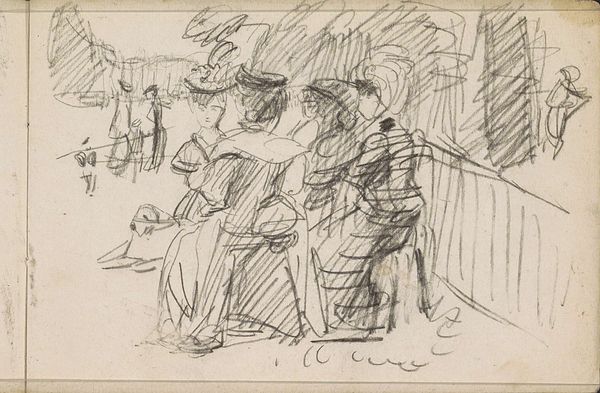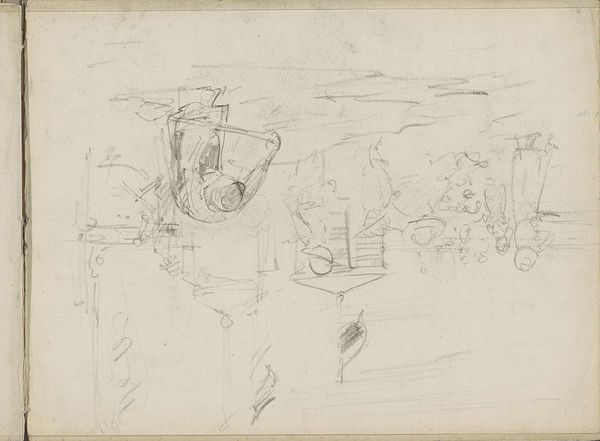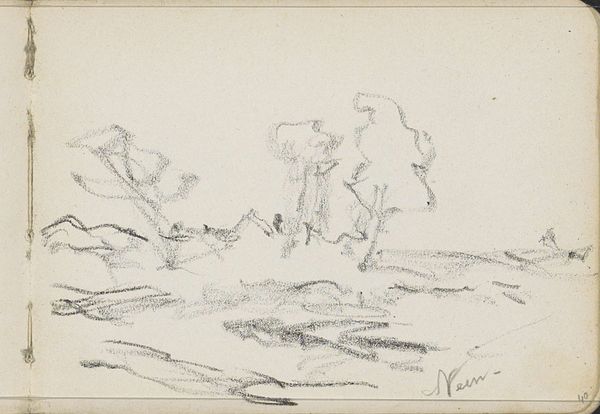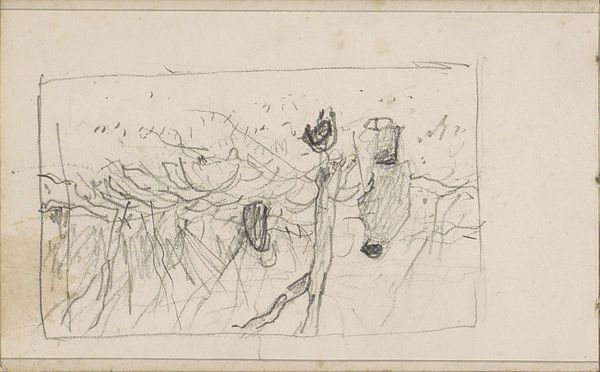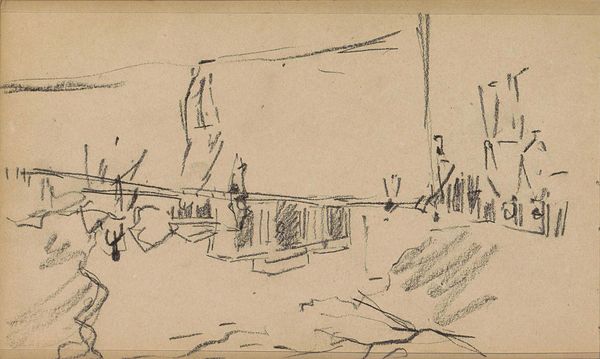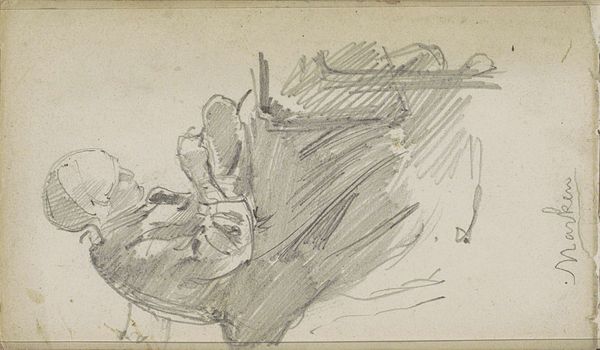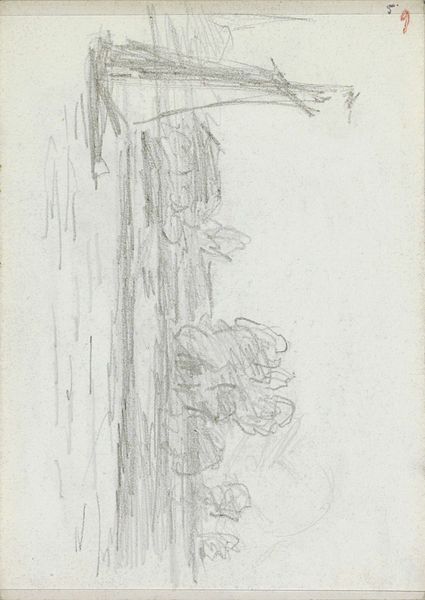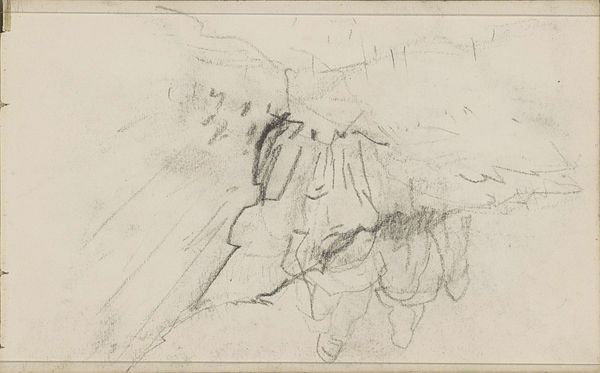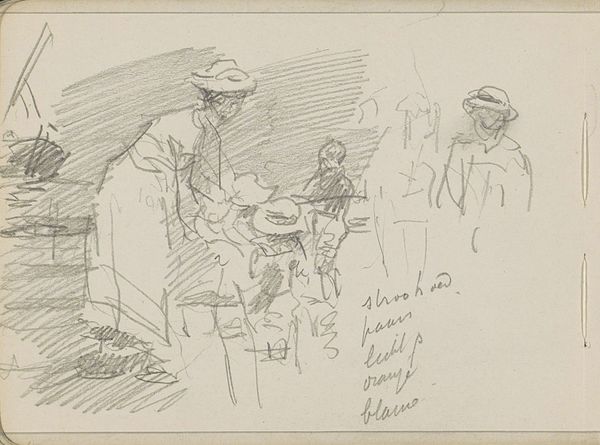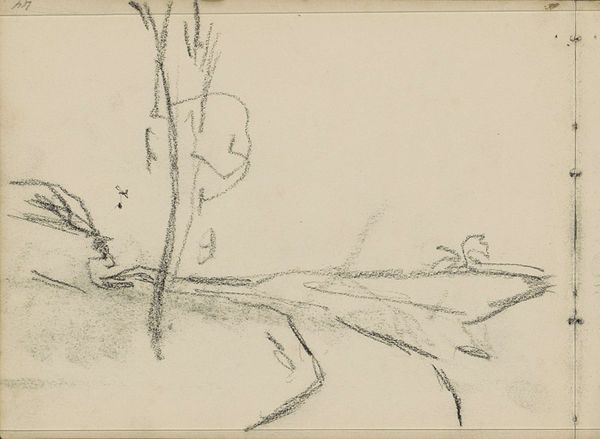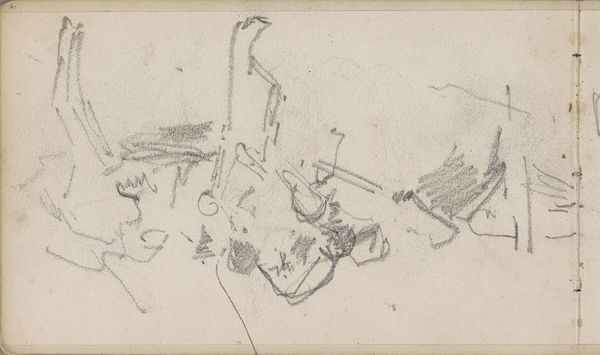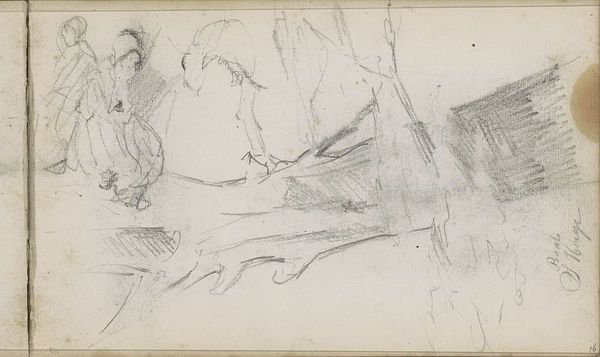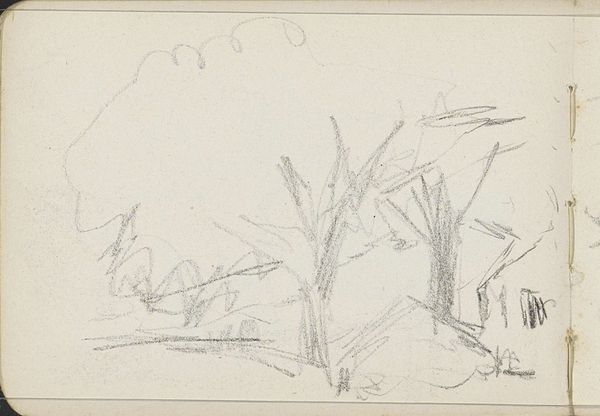
drawing, pencil
#
drawing
#
light pencil work
#
pen sketch
#
figuration
#
personal sketchbook
#
idea generation sketch
#
sketchwork
#
ink drawing experimentation
#
pen-ink sketch
#
pencil
#
sketchbook drawing
#
sketchbook art
#
realism
#
initial sketch
Copyright: Rijks Museum: Open Domain
Editor: Here we have Johan Antonie de Jonge's "Twee figuren," created sometime between 1881 and 1927, using pencil and ink. It looks like a quick sketch, maybe even a study for something larger. What strikes me is the anonymity of the figures. What do you see in this piece? Curator: This drawing offers us a glimpse into the artist's process of observation and documentation of the everyday. The anonymity you observe is precisely what draws me in. How does this lack of specificity allow the viewer to project their own experiences onto these figures? What roles are these figures performing, and for whom? Editor: That's interesting! I hadn’t thought of it as projecting my own experiences. It does look like some kind of labour in the sketch... almost agricultural, the person is bent over... Curator: Exactly! Now, let’s consider the period during which this was created, a time marked by rapid industrialization. Could this image be a quiet commentary on the working class? Do you think the artist's choice to obscure the figures' identities might be a way to universalize their experiences, hinting at broader societal inequalities? Editor: Possibly. By not individualizing them, maybe he is trying to focus on the idea of labor itself and its impact on people. Thanks that has made it easier to connect with, what does labour mean today. Curator: Precisely. This sketch then becomes a potent reminder of the social realities that often go unseen. Considering it in that light really reframes how we engage with it, doesn’t it? Editor: It really does. Thanks for shedding a light on that, and giving a broader sense of context!
Comments
No comments
Be the first to comment and join the conversation on the ultimate creative platform.
